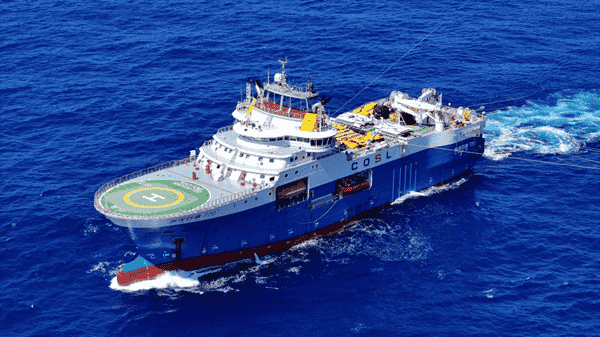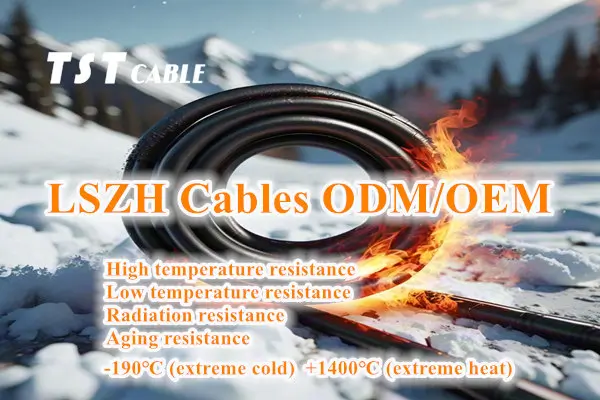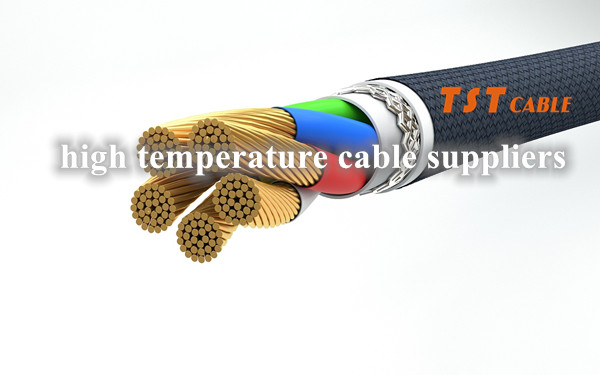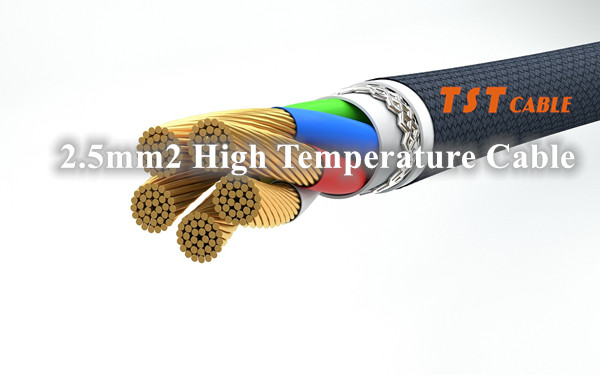Traditional flame retardant cables have their limitations, mainly using flame retardant neoprene, chlorosulphonated polyethylene and other halogen-containing materials as the cable sheath, once burned, will release a large number of harmful corrosive hydrogen halide gas. In addition, the current ships generally use internal forced ventilation system, the gas will be along the ventilation system in the entire ship spread rapidly, smoke blocking vision, harmful gases filled, to the scene of the escape and rescue brought about by the difficulties. In addition, corrosive gases will also damage the hull instruments, meters and other facilities, more dangerous than direct combustion. Therefore, the development of a new generation of low-smoke, halogen-free, flame retardant cable is of great significance.

First, the marine cable technology development points of research
(a) Halogen-free, low-smoke, low-toxicity flame retardant marine cable basic requirements analysis
In the research and development of halogen-free, low-smoke, low-toxicity, flame-retardant marine cables, the basic requirements: first of all, research and development work to preserve the physical, mechanical, electrical, oil, heat and flame retardant properties of the existing marine cables as the basis; secondly, research and development of the cable combustion can not produce too many toxic gases and corrosive gases; and then, try to minimize the research and development of the cable combustion of the amount of smoke; fourth, research and development of cables, we must consider the new cable Can be processed and produced in the established mainstream cable production equipment, or production lines can be put into production without major changes.
(b) Halogen-free, low-smoke and low-toxicity flame-retardant marine cable research and development of the key points of the study
In terms of structure, halogen-free flame-retardant marine cables and traditional marine cables are basically similar, the difference lies mainly in the use of polyolefins as the base polymer. Therefore, the key points of the new cable research and development are: first, insulation, sheath and filling are not halogenated polymers: second, the use of inorganic fillers such as AI (OH) 3, Mg (OH) 2 and other inorganic fillers in the insulation and sheath formulations: and then, in order to improve the compatibility of the base material with the inorganic fillers, the base material can be added to the base material of a certain amount of EVA: fourth, the addition of a certain amount of coupling agent additives to enhance the mechanical properties of the insulating compound and improve its processing technology. Mechanical properties, improve its processing performance.
(c) Halogen-free low smoke and low toxicity flame retardant marine cable typical formula research
Halogen-free low-smoke and low-toxic cable ethylene-propylene rubber insulation formula analysis. Materials and ratios are: 100 units of weight of EPDM rubber; 100 units of weight of aluminum hydroxide; 10 units of weight of low molecular weight high-pressure polyethylene; 10 units of weight of the operating oil; 5 units of weight of zinc oxide; 3.2 units of weight of the DCP crosslinking agent; 2 units of weight of the silicone burnt A-172; 1.5 units of weight of the antioxidant RD; 1 unit of weight of the TMT co-crosslinking agent. Performance requirements are: oxygen index, 25; NBS smoke density Dm, flaming combustion is 105, flameless combustion is 205; tensile strength, 10MPa: elongation, 630%; 150 ℃ x 7d aging performance, tensile strength retention rate: 89%, elongation retention rate: 99%.
(d) Halogen-free low-smoke low-toxicity flame retardant marine cable research and development of the relevant with the agent study
- Aluminum hydroxide, white, emblematic crystal powder, flame small, non-toxic and tasteless, after combustion into non-toxic water vapor, aluminum oxide can form a heat-resistant screen.
- Hydroxide, dehydration temperature of 300 ℃ ~ 350 ℃, with filling, smoke inhibition, flame retardant properties.
- Silane coupling agent A-172, transparent liquid, or slightly yellow. It is used for coupling between inorganic filler and polymer molecules to improve physical properties.
- Ethylene vinyl acetate vinegar, white, in the form of particles. Acetic acid amount of 45% when the polymerization, need to use peroxide and other crosslinking.
Second, marine cable evaluation method study
(a) marine cable flame retardant assessment
First of all, the material itself has to prevent, delay and self-extinguish the performance of flaming combustion is the material’s flame retardancy. Usually, the evaluation factors of flame retardancy of materials are oxygen index and temperature index. In the determination of oxygen index, the material is placed in the specified test environment, and the critical point of the material to maintain the burning state is obtained by analyzing the minimum oxygen concentration of combustion. The lowest temperature at which the material is placed in air and continues to burn after ignition and cannot extinguish itself is the temperature index. Unit of normal air oxygen accounted for the volume percentage head 21%, so the material oxygen demand index exceeds 21 materials, even after combustion will be self-extinguishing in the air. The higher the temperature index of the material, the lower its combustibility, the better the flame retardancy. Secondly, the flame retardancy of the cable refers to the specified test environment, so that a single or bundled cable combustion, when the source of ignition is taken away, the cable flame spreads only in a small range, in a limited time its residual flame or afterburning can be self-extinguishing characteristics. Due to the various types of construction environments, cable laying methods are different, so, in the determination of cable flame retardancy, should be based on different laying methods and specific flame retardant requirements to start the test.
(b) Evaluation of smoke emission of marine cables
Cable is a polymer, its constituent materials in the combustion will be accompanied by part of the smoke, the smoke is made of water vapor, gas, and due to incomplete combustion and the resulting mixture of suspended solids. In general, the smoke density box test is a common way to evaluate the cable material smoke: in a closed combustion chamber, the cable will be flameless thermal decomposition or flammable combustion, the use of optical methods, to evaluate the smoke accumulation caused by the degree of attenuation of the beam, the final evaluation results with the optical density, which is positively correlated with the cable smoke, than the smaller the optical density, the smaller the smoke concentration.
(c) Determination of gas hazardous properties of marine cables
Low-smoke halogen-free flame retardant cable combustion does not produce hydrogen halide gas, CO, SO2, etc. is also very small. In order to determine the harmfulness of cable combustion gases, the International Electrotechnical Commission 60754 and other standards and reference methods for the determination of cable combustion gas emissions. First, toxicity determination. In the determination of toxicity, can be taken to determine the biological test, the cable burning 6 minutes after the collection of gas emitted into the test box equipped with rats. With the time change, the rat’s reaction and activity ability to observe, and then evaluate its toxicity. Second, corrosivity test. In the determination of the corrosiveness of the gas generated by the cable combustion, according to the provisions of the International Electrotechnical Organization 60754-2, first of all, the quantitative cable into the tube furnace combustion, combustion of the gas released into the distilled water bottle. Finally, the pH value and conductivity of the distilled water is measured, and then clarify its corrosiveness.
III. TST CABLE Conclusion
Halogen-free, low-smoke, low-toxicity flame retardant cables are the future development direction of marine cables. In the research and development of related materials, attention should also be paid to the applicability of the price and the simplicity of the processing technology, so that the halogen-free, low-smoke, low-toxicity flame-retardant marine cables can be promoted in the market faster, and effectively play its due role.
Also available in:
English





